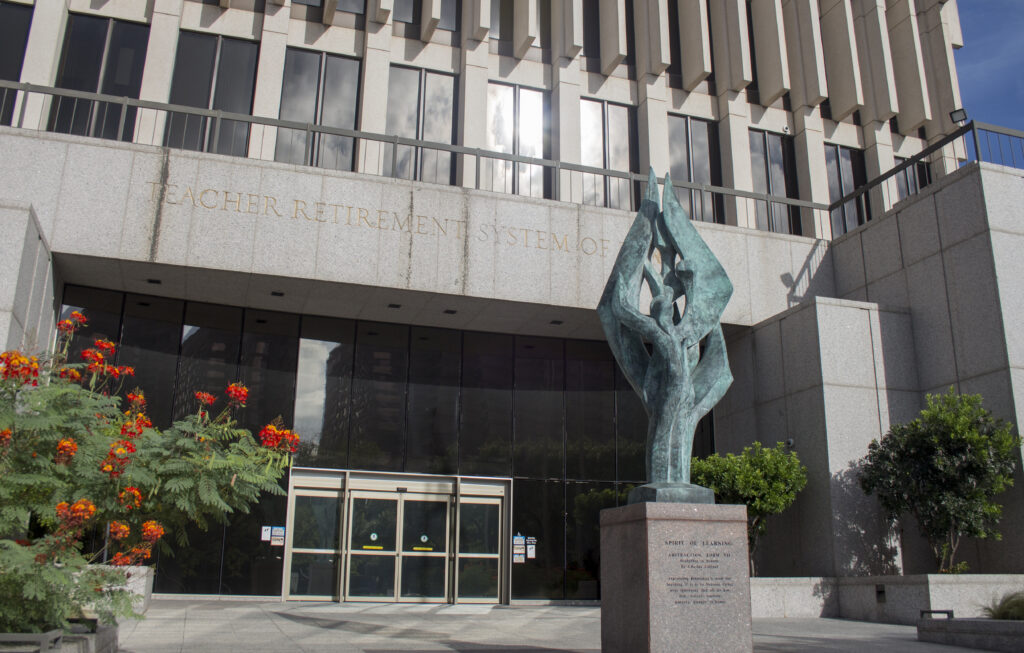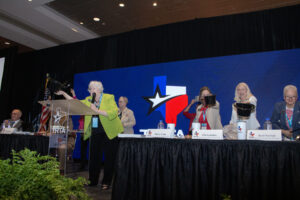Tim Lee, TRTA’s Executive Director, will host a Facebook Live event on Thursday discussing this issue and fall virtual meetings on Thursday, July 30 at 10 a.m. The video will be available on TRTA’s Facebook page. You don’t need a Facebook account to view the video. The video will be recorded to the videos section of the Facebook page if you miss the live event.
In a recent article published in the Dallas Morning News, author Scott Burns discusses the investment practices—and their benefits and downfalls—of the Teacher Retirement System of Texas (TRS) pension fund.
Members of the Texas Retired Teachers Association (TRTA) have had serious concerns about TRS investment costs over the past few years, and Burns’ article provides a smart, researched validation for their apprehension.
According to Burns, TRS earned 5.2 percent in the fiscal year ending Aug. 31, 2019. It’s a number that appears small but exceeds the returns for other state public pension funds by a significant margin. For example, the Employees Retirement System of Texas (ERS) earned 3 percent during the same period.
Still, Burns points out, while 5.2 percent is a better fund performance than others, it falls short of TRS’ rate of return goal of 7.25 percent. Additionally, while Burns notes that TRS has a lot of talent on its investment staff, the “compensation and incentives for fund managers clocked in at a cool $1.3 billion for the year.”
Burns also points out that “more than 90 percent of the (TRS) management fees go to ‘alternative investments.’” Nearly half of the fund’s assets ($72.2 billion) in alternative investments, and TRS is projected to commit “an additional $36.9 billion to such investments in future years.” All of these figures can be found in the TRS Comprehensive Annual Financial Report (CAFR).
TRTA has always been supportive of TRS and its robust Investment Management Division but has continued to have questions and concerns about high external fees and staff bonuses for many years. Additionally, documents such as the 174-page TRS CAFR may be considered overwhelming for the average reader not accustomed to dissecting and analyzing information from complicated financial reports.
Transparency is vital to TRS improving its relationship with its members, and the Texas Sunset Advisory Commission’s staff evaluation of TRS this year pointed out that its explanation of alternative investments needs additional oversight and clarity. This clarity should include information about changes in investment practices and their overall impact on the fund.
For example, in the past, TRS had low investment costs and very good returns with mostly internal management. Beginning in 2007, TRS moved away from internal management and began using more external managers and moving more money to alternative assets with higher fees. The cost of external management has increased each year!
“The superiority of low-cost index investing suggests that a lot of money for teacher retirements is being siphoned off into the pockets of well-meaning and very well-paid investment managers,” Burns writes. “What if that money went to teachers? What would it do?”
TRS retirees live on an average monthly fixed income of $2,096. That’s just a little more than $25,000 per year. As the cost of living continues to rise for people everywhere, retirees are trying to make ends meet on an amount that is considered poverty level. Many retirees return to work, filling in their financial gaps with substitute teaching work. With the onset of the COVID-19 pandemic, this option may no longer be available to retirees, particularly those with underlying health conditions that make them more vulnerable to the virus.
Retirees also face the harsh, cold fact that raises are not given regularly, if at all, from the pension fund unless the Texas Legislature provides the means for it. In 2019, most retirees received a 13th check (which did not exceed $2,000) thanks to TRTA working with legislators to make the payment feasible. With the economy suffering as a result of the pandemic, retirees do not know when or if they will see supplemental income again.
Burns takes his query one step further and does the math for us, stating that if you divide the average yearly retiree’s income ($25,152) into the $1,305,067,683 spent on investment management, “you get 51,887 additional years of teacher retirement income.”
While that isn’t even enough to provide another year of income for all current TRS retirees—there are about 435,000 of them—it’s still a figure that stands out and matters to TRTA and should matter to TRS and the Texas Legislature.
How much, for example, could that amount help retirees struggling to pay for medical bills or costly prescriptions? It is enough to provide a one-time supplemental payment to all TRS retirees of about $3,000!
Burns asks if Texas public education retirees should be happy and proud, and answers with the same ambivalence we know many retirees feel.
Retirees are proud to have a system that has never missed a payment to one of its annuitants in its more than 80-year history. Retirees are proud to have dedicated their working lives and now their retirement years to public service.
They know that the TRS pension system provides great value and security to them and to the state. The system is worth improving, as it is the sole retirement income for most public-school employees—80 percent of whom do not receive Social Security benefits.
But retirees deserve better, and they deserve more. TRS must work with TRTA and the Texas Legislature to find a way to provide meaningful, long-term and much-needed benefit increases to retirees.
The TRS Board of Trustees should also make it a priority to re-evaluate its investment approach. History has shown that increasingly moving to alternative investments has not worked as planned. If returns had been stellar, the outlandish fees may have been justifiable. Several years of savings on these fees would have been enough to pay for a COLA for retirees.
TRTA is urging the TRS Board of Trustees to address Mr. Burns’ article and provide an explanation to members on how the agency will fix this problem. TRS is accountable not only for providing retirees with a reliable monthly income, but also for explaining its investment practices and how those choices ultimately impact its members’ bottom lines.
If you haven’t already, please be sure to sign up for the Línea interior and support our work by becoming a member o by renewing your membership.




